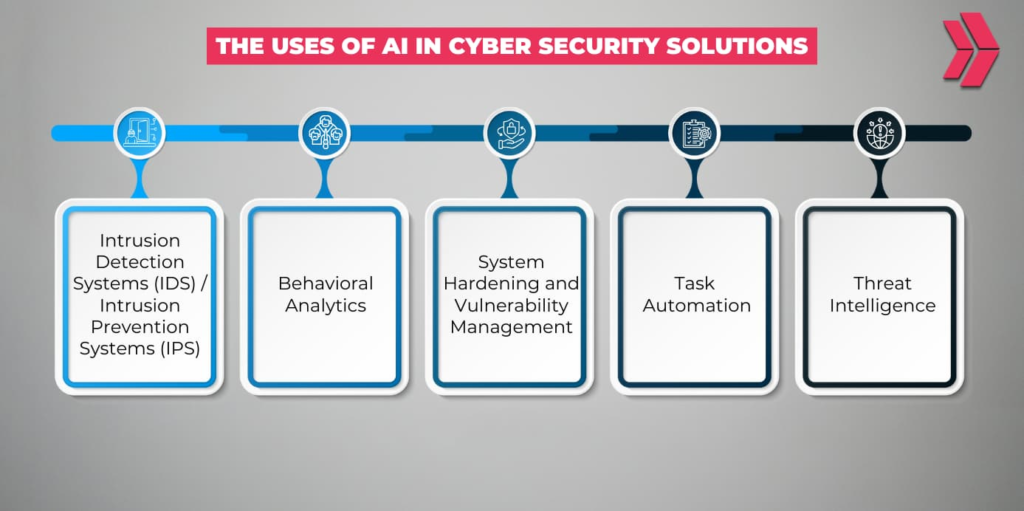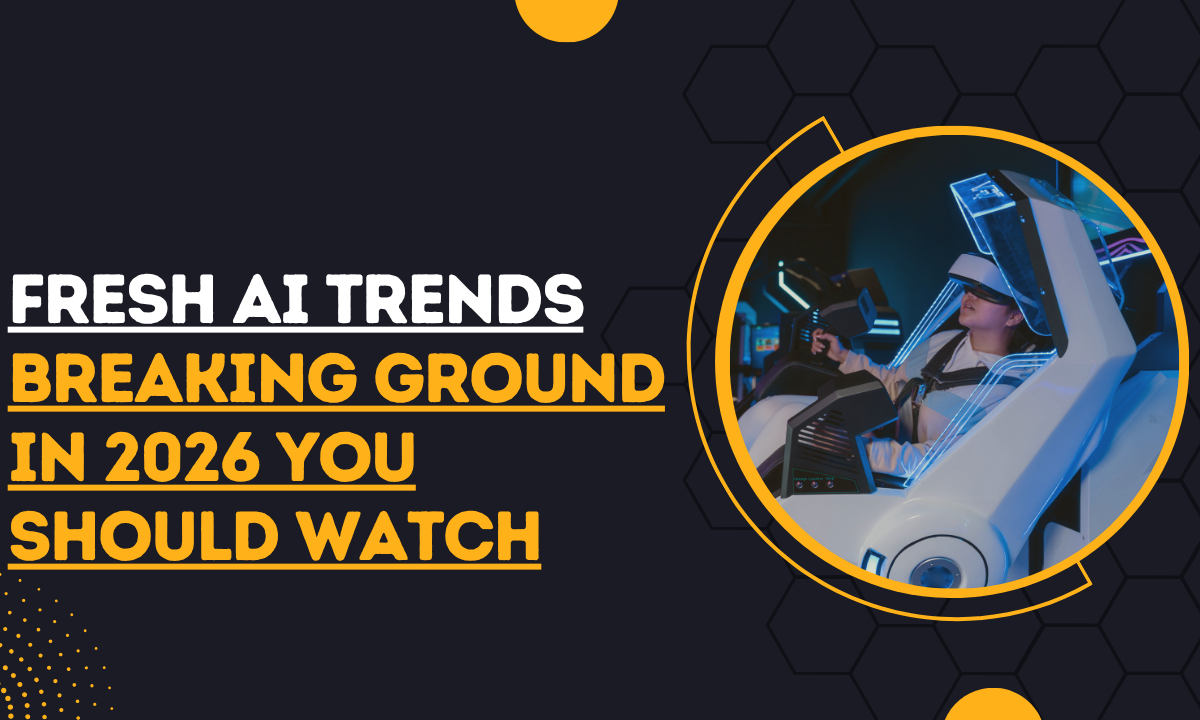Fresh AI Trends Breaking Ground in 2026 You Should Watch
Right now, fresh AI trends are reshaping technology and society in remarkable ways.
You might not notice them every day, but they are present in your phone, your workspace, and your decisions.
In this article, you’ll explore how current AI developments are moving beyond hype.
You’ll uncover practical shifts in generative models, regulation, hardware, and use-cases you can relate to. My goal is to explain what these changes mean for you, plainly and directly.
By the end you’ll have a clearer sense of how to watch, engage with, and adapt to AI’s evolving role.
1. Generative AI Goes Beyond Content Creation
What happens when fresh AI trends move from simple chatbots to full-scale content generation?
Generative AI, once mainly text-based, now spans images, video, audio and more.
According to industry sources, tools like those driven by large language models (LLMs) are becoming mainstream.
For you, this means the apps you use will increasingly generate or assist in creating instead of just processing. It could be writing your first draft, designing a graphic, or producing a video clip from a prompt.
The key: the barrier to producing high-quality creative output drops.
But new challenges emerge: accuracy, bias and authenticity.
As one expert put it, “AI is not just about algorithms—it’s about empowering people.”
When you use these tools, you’ll want to know when they help and when they may need supervision.
2. Agentic AI and Multimodal Models on the Rise
Ever thought of an AI that plans, reasons and acts on its own?
Among the top fresh AI trends for 2026 are agentic AI and multimodal models.
Multimodal means the system understands and processes text, image, audio, or video.

Source: HGS CX
Agentic AI refers to systems with autonomy—they can perform tasks, adapt to new information and make decisions under guidance.
They’re not human-level general intelligence yet, but they are heading in that direction.
TechHBS says, “Agentic AI steps out of the reply box. It doesn’t wait for instructions. It takes charge.”
What this means for you: expect tools that don’t just respond, they initiate. They might schedule your meetings, summarize your week, and alert you to anomalies.
Use them but keep oversight.
Because when AI acts — you’re still responsible.
3. On-Device and Edge AI: Privacy Meets Performance
Another key area of fresh AI trends is the shift toward on-device or edge AI.
Rather than sending data off to remote servers, models run locally on your phone, laptop or IoT device.
This matters for latency (speed), privacy, and reliability — especially when connectivity is weak or data is sensitive.
For you, this could mean your device translates languages without needing the cloud.
Even camera features recognise scenes or people without-ever sending images out.
This shift may make AI features more accessible in places with limited infrastructure and more trustworthy in privacy-focused settings.
4. AI Regulation, Governance and the Global Race
Are you aware of how governments treat fresh AI trends?
Regulatory efforts are growing rapidly.
According to the Stanford University 2025 AI Index Report, mentions of AI in legislation increased 21.3% across 75 countries since 2023.
The U.S., EU, China and others are crafting rules around transparency, data sovereignty, safety and competition.
What this means for you:
Whether you’re using AI or developing it, the environment is shifting.
Standards matter.
If you consume or deploy AI tools, knowing the governance context helps you judge reliability and compliance.
Also, the global AI race means tech availability and standards will differ by country.
5. Enterprise AI Adoption and Real-World ROI
Many organizations still struggle with moving from proof-of-concept to real value.
Yet one of the fresh AI trends is enterprise adoption targeting measurable ROI
Surveys show a growing percentage of enterprises say they have achieved exponential productivity or efficiency gains with AI.
For you as a professional, this means your company or team may increasingly turn to AI an operational tool.
This enables automating project management processes, delivering insights and changing workflows.
The implication: you may need to adapt your skills to collaborate with AI. These AI systems become tools, and knowing how to work with them gives you an edge.
6. AI in Cybersecurity, Ethics and Safety

Source: Clarusway
With more AI use comes more risk.
One aspect of fresh AI trends is growing concern over security, ethics and safe deployment.
For example, generative models can create deepfakes; agentic systems could act unexpectedly.
Ethics issues around bias, fairness, transparency remain unresolved.
For you, this means when you evaluate tools or rely on AI outputs, ask questions:
Was the model audited? Are results explainable? What are the failure modes?
Responsible use of AI isn’t optional anymore because AI safety comes first. In fact, it’s expected by users, regulators and partners.
7. Skills, Democratization and No-Code AI
Good news: one of the important fresh AI trends is that you don’t need to be a PhD to use AI.
Platforms increasingly offer no-code or low-code AI development and democratize access.
That means creators, marketers, small businesses and individuals can build AI-enabled workflows, models or tools without deep programming.
For you, that means digital literacy expands: you might build an AI-powered email summarizer, automate a marketing campaign or deploy a chatbot in hours.
The takeaway: learning basic AI-tool fluency becomes valuable.
Understanding concepts matters more than knowing every algorithm.
8. The Social Impact and Future of Work
Finally, consider how AI trends affect people’s lives and work.
According to research, 33% of organisations say they have a data- and AI-driven culture and expect agency, while 92% cite culture and change management as their biggest barrier.
There’s an increasing concern about AI based job-loss.
But that’s not entirely true.
Instead, you might see job roles shift, tasks being taken over by AI, and new roles emerging around oversight, design and ethics.
For you, that means building adaptability, and focusing on uniquely human competencies.
This means developing empathy, strategy, ethics—and learning to partner with AI rather than compete with it.
To thrive, you’ll want to ask:
How will my role change?
What tasks could I hand to AI?
How can I focus more where I add value?
FAQs
1. What are the most important fresh AI trends in 2026?
Key trends include generative AI, agentic AI, on-device AI, enterprise adoption, cybersecurity, no-code AI, and global governance.
2. How will generative AI affect everyday tasks?
You’ll see tools that write, design, summarise or create from prompts, reducing repetitive work and enabling new creative workflows.
3. Can non-technical users adopt AI tools easily?
Yes. No-code platforms and simplified interfaces mean you don’t need deep programming skills to use important AI tools.
4. Why is regulation becoming an AI trend?
Governments worldwide are introducing rules to ensure AI safety, transparency and fairness, affecting how you use or trust AI tools.
5. How does on-device or edge AI differ from cloud AI?
Edge AI runs on your device rather than remote servers. That means faster response, greater privacy and lower dependence on connectivity.
6. What skills matter as AI becomes more prevalent at work?
Focus on human-centric skills: judgment, ethics, strategy, communication. Also learn how to collaborate with AI rather than compete with it.
7. What risks should I watch for as AI adoption grows?
Be aware of bias, privacy issues, inaccurate outputs (hallucinations), and the need for human oversight when AI systems act or make decisions.
Related Posts
Non-AI Human-Exclusive Competencies That AI Can’t Replace
Explore timeless human strengths — empathy, intuition, creativity, and moral judgment — that no algorithm can authentically duplicate.
Don’t Miss: Google AI’s Search Revolution Changes Everything
Discover how Google’s AI-driven search is redefining digital discovery, relevance, and user experience across industries worldwide.
Inside Google Gemini Enterprise: The AI Agent Changing Work
Step inside Gemini Enterprise — Google’s next-gen AI agent that’s transforming workflows, collaboration, and decision-making in real time.
Best AI Tools for Students: Your Ultimate Guide to Smarter Studying
Unlock powerful AI tools that help students learn faster, write smarter, and organize better — revolutionizing academic productivity.
Conclusion
To sum up, fresh AI trends are real, present and impactful.
They span technological breakthroughs, tools running at the edge, global governance, enterprise use, and the changing nature of work.
For you, the opportunity lies in awareness and engagement—not fear or resistance. When you understand what’s happening, you can decide how to use AI in your role, your workflow and your future.
The shift isn’t just about machines; it’s about how you work, learn and collaborate.
Keep watching, stay curious—and remember: as AI evolves, so do your possibilities.

